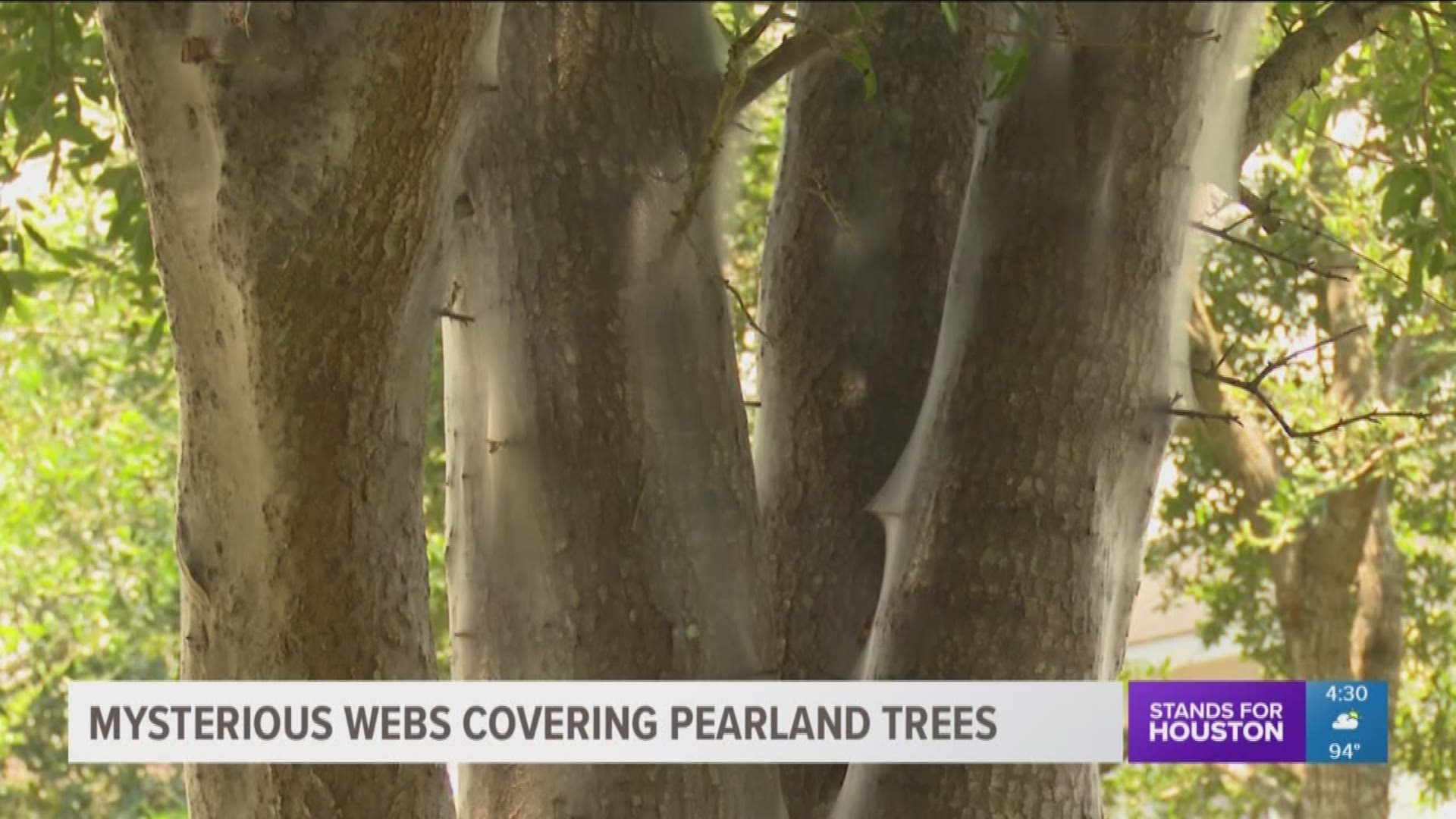PEARLAND, Texas - It’s a sight that can give anyone who doesn’t like bugs the creeps: mysterious webs covering trees.
Pearland residents like Rebecca McElroy said webbing on one of her trees appeared overnight.
She wondered what is weaving these webs.
“It’s ugly,” McElroy said. “I work out in my yard a lot. I just have never seen anything like that.”
She said the creator of the thick, silky webs is harming her lawn.
“I thought it would spread to my grass. I wasn’t sure. I didn’t know anything about it," McElroy said.
To answer her questions, KHOU brought in certified arborist Brad Phillips with ArborTrue to explain to McElroy exactly what was happening.
“It’s very common, especially in July, August months -- your hottest months of the year,” Phillips said.
He is talking about bark lice.
“Actually visualizing this particular species is quite difficult, and I don’t know if we will be able to see one on here or not,” he said.
The tiny -- sometimes microscopic -- insects live on all trees and love Live Oaks like the one in McElroy’s backyard.
Although unsightly, the bark lice and the web are harmless.
“They’re only on the tree for the purpose of consuming built up organic matter so old pollen from springtime that hasn’t washed out in the rain, for instance," Phillips said.
He said it helps clean trees.
“One of the worst things that you can do when you are concerned about an insect or a pest on a tree is to break out the chemicals and then begin to conduct chemical warfare on the tree,” Phillips said.
As the weather cools off, he said the bark lice will move out until next summer.
The web can be hosed off if people really want to get rid of it.
Phillips warns if webbing is spotted on foliage like leaves, then there may be other pests that can cause damage to trees.

